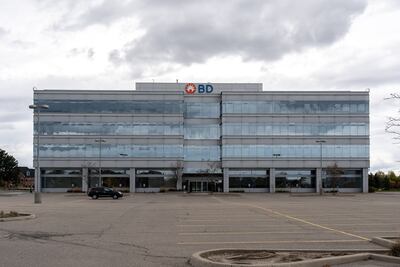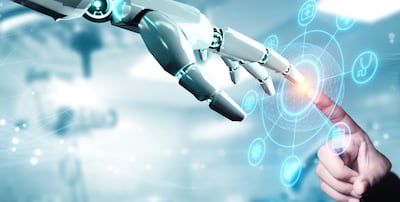LumiraDx's time as an independent diagnostics company is coming to an end with a sale to Roche just over three years after it went public.
On September 2021, LumiraDx went public on NASDAQ following its merger with the special purpose acquisition corporation, CA Healthcare Acquisition Corp. The deal valued LumiraDx at almost $5bn. (Also see "Analyst Insight: Justifying A Price Target Following Poor SPAC Reception" - Medtech Insight, 29 October, 2021.)
Promoted by Bill Gates and tackling a then-critical issue – SARS-CoV-2 (COVID-19) diagnostics – LumiraDx seemed like an almost-sure bet, however on its first day of trading, its share price dropped from $10 to $7.94.
And now LumiraDx is worth a fraction of what it once was and has agreed to a purchase by Roche for $295m with an additional contingent of $55m on the cards. During this time, its share price has further fallen to just 0.49 cents.
LumiraDx ’s acquisition by Roche was formally announced on 29 December via a 6-K form filed with the US Securities and Exchange Commission, just over a month after several of its board members and CEO resigned.
The deal will see Roche integrate LumiraDx ’s technology with its own. Roche CEO Matt Sause said that “LumiraDx has developed a highly versatile platform that delivers strong performance across multiple disease areas and technologies. We believe this will enable better patient access to timely results in decentralised healthcare settings worldwide.”
In the 6-K filing, three other key points to the deal were raised.
Andrew Johnson, Lisa Rickelton and Lindsay Hallam of FTI Consulting, a Washington-based consulting firm, have been appointed as Cayman-registered LumiraDx Limited’s administrators. They will take control of LumiraDx Limited’s UK-based subsidiaries, LumiraDx Group Limited and LumiraDx International Limited.
The additional payment of $55m will not go to Lumira’s shareholders, but instead will be used to pay back its lenders. BioPharma Credit Investments V (Master) LP and BPCR Limited Partnership have agreed to spend up to $59.2m on supporting LumiraDx until it is purchased. Roche will pay back up to $55m of this.
The form also details the likely outcome for LumiraDx ’s investors. The form states: “The Company expects that there will be no assets available for distribution to its shareholders or the unsecured creditors of the LumiraDx group.”
LumiraDx shareholders were already in a precarious situation. Due to the company's low trading price, its shares were at risk of being de-listed from the NASDAQ.
LumiraDx’s acquisition comes after consistently poor results. On 24 August last year, it announced its second quarter of 2023 earnings. Revenues summed to $21m, down from $44m during the same quarter in 2022. Non-Covid-related revenues made up less than half of this, with $4.4m coming from the licensing of LumiraDx’s technology and $4.8m coming from distribution.
Meanwhile, R&D expenses were $15.8m and sales, marketing and administrative expenses summed to $22.7 million. Net loss for the quarter came to $49.7m.
The previous quarter was much the same. Revenues were $22.2m, staggeringly lower than the $126.4m recorded during the first quarter of 2022, and costs were similar, making for a $44.1m quarterly loss.
LumiraDx did work to combat these losses with multiple rounds of layoffs including a 40% cut in April 2023.
However, these appeared to be unsuccessful, and in November, Lumira’s CEO and chair Ron Zwanziger, chief technology officer and director David Scott and Jerry McAleer, LumiraDx’s chief scientist and a director, all resigned.
Did Anything Actually Go Wrong?
On paper, LumiraDx appears to be a company with a solid product portfolio. It markets a full range of SARS-CoV-2 tests which integrate both flu A and B and RSV as well as tests for D-dimer, NTpro-BNP (the only fingerstick version on the market), C-reactive protein, HbA1c and international normalized ratio, which is used to monitor the anticoagulant effects of vitamin K antagonists.
All of these tests are frequently used in a doctor’s office and run on LumiraDx ’s own widely-distributed system – meaning it does not have to make payments or share earnings with anyone else.
Moreover, the company’s leadership were consistent with updates regarding efforts to improve usage.
In the company’s last earnings call – and before he resigned – LumiraDx 's CEO, Ron Zwanziger, highlighted numerous traction-driving efforts including partnerships with research hospitals, publications in journals like the European Journal of Heart Failure and collaborations with companies like Medtronic.
He also discussed work done with the NHS to roll out LumiraDx ’s CRP test on virtual wards. Apparently, “in 50% of patients the LumiraDx CRP test improved the safety of care and helped avoid the need for escalation to hospital care at a cost saving of up to 3,914 pounds per patient.”
LumiraDx has also hit most of its publicly declared development goals. In 2021, Medtech Insight spoke to Jeffery Cohen, an analyst at Ladenburg Thalmann, about his $14 and subsequent $9 price targets for the company. (Also see "Analyst Insight: Justifying A Price Target Following Poor SPAC Reception" - Medtech Insight, 29 October, 2021.)
During this discussion, he outlined his valuation strategy, arguing that, compared to other companies, LumiraDx could be undervalued. He also pointed out that the company’s then-pipeline products had total addressable markets of $4bn in the US alone.
It appears simply that LumiraDx has failed to capitalize on its technology. Despite shipping out 1,500 instruments during the last quarter and having many thousand more worldwide (including 5,000 which were sponsored by the Gates Foundation), the centers did not use the equipment often enough to drive sufficient revenue.
Or, as Doris-Ann Williams, CEO of the British In Vitro Diagnostics Association for 22 years before her retirement said regarding Lumira’s difficulties: “[Payors] put up a big smokescreen about why diagnostics aren’t used. During pilot studies, they really like them, and they want to use them. But when they have to start paying for it, that’s when they say there’s no funding.”








